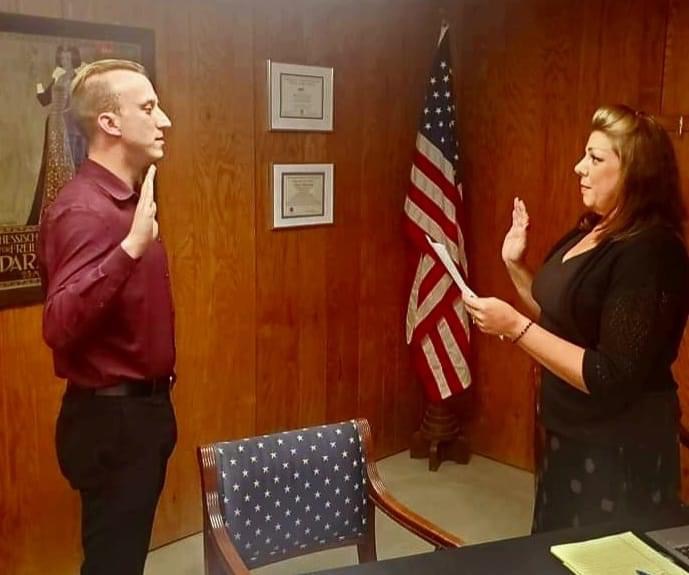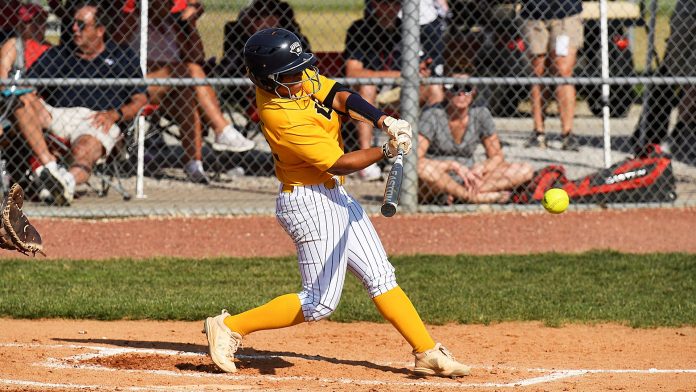EVANSVILLE, Ind.—University of Southern Indiana Softball racked up a combined 19 runs off 30 hits as the No. 10 Screaming Eagles survived a pair of elimination games Friday to advance to the championship round of the NCAA Division II Midwest Region #1 Tournament at the USI Softball Field.
Junior pitcher/designated player Allie Goodin (Evansville, Indiana) went a combined 5-for-7 at the plate with three home runs, two doubles, five runs scored and six RBI as the Eagles defeated Lindenwood University, 10-1, in the opening game before defeating Drury University, 9-3, in the nightcap.
USI (45-11) faces Saginaw Valley State University in the championship round Saturday, with an updated time of 10 a.m. due to the threat of rain in the Evansville area Saturday afternoon.
USI 10, Lindenwood (35-13) 1
USI wasted little time getting on the board as a bases loaded walk to junior shortstop Jordan Rager (Fishers, Indiana) in the top of the first put the Eagles on the board for the first time in the regional.
Rager put USI up, 2-0, with an RBI-double in the third and came around to score the Eagles’ third run on an RBI-single by junior second baseman Rachel Martinez(Chicago, Illinois)Â two batters later.
Goodin’s three-run bomb, in the fourth made it, 6-0, while sophomore first baseman Lexi Fair (Greenwood, Indiana) and Goodin hit back-to-back home runs in the sixth to give the Eagles an 8-1 advantage. Fair had an RBI-double in the seventh before scoring on an error moments later to give USI a nine-run cushion.
Goodin (14-3) earned the win after giving up just one unearned run off three hits in five innings of work.
USI 9, Drury (37-17) 3
After spotting the Panthers a two-run cushion in the top of the first inning, the Eagles rallied with four tallies in the home half of the first to flip the margin in their favor.
Fair had an RBI-single to put the Eagles on the scoreboard, while a two-run double by sophomore catcher Sammie Kihega (Greenfield, Indiana) put the Eagles in front 3-2. Kihega scored USI’s fourth run moments later thanks to an RBI-double by Martinez.
Martinez gave the Eagles a three-run cushion with an RBI-single in the third, while Fair had an RBI-double in the fourth to give USI a 6-2 lead.
Drury cut into USI’s advantage with a tally in the bottom of the fifth, but a two-run triple by freshman outfielder Kennedy Nalley (Huntingburg, Indiana) gave USI a commanding 8-3 advantage. Goodin hit a solo home run in the sixth to cap off the Eagles’ monster day at the plate.
Freshman pitcher Josie Newman (Indianapolis, Indiana) got the complete-game win in the circle after giving up three runs off eight hits in seven innings of work. Newman (15-3) finished with four strikeouts in the win.
Up Next
USI takes on Saginaw Valley State Saturday in the championship round of the NCAA II Midwest Region #1 Tournament. The Eagles, who lost to the Cardinals, 1-0, Thursday afternoon, will have to win twice in order to advance to the NCAA II Midwest Super Regional, which is May 19-20.
Saginaw Valley State (36-18) got to the championship round thanks to a 2-0 victory over Drury in the opening game Friday at the USI Softball Field.
Look at the NCAA II Midwest Region #2 Tournament
No. 3-seeded Grand Valley State University will take on No. 7-seeded University of Findlay in the championship round Saturday at 8 a.m. (CDT). The Lakers defeated No. 2-seeded University of Indianapolis, 7-0, on the strength of a no-hitter in the opening game Friday, while Findlay had a perfect game in its 2-0 win over No. 6-seeded Ohio Dominican University in an elimination game before knocking out UIndy with a 5-3 win. The Oilers, like USI, will have to win twice Saturday in order to advance to Super Regionals.











